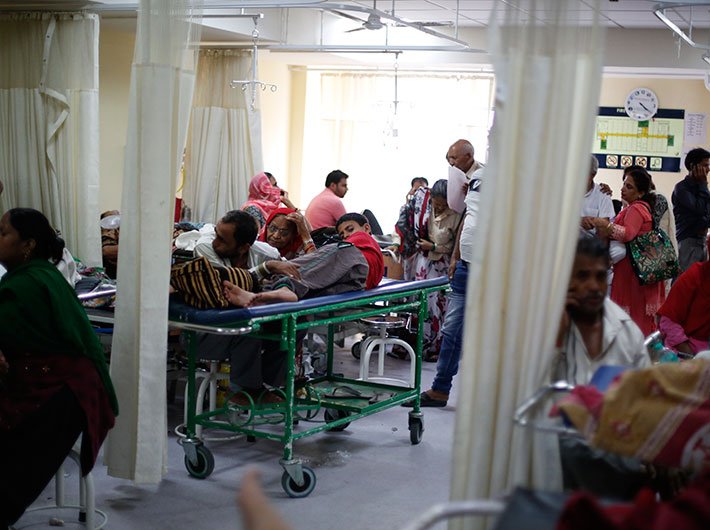Child and maternal malnutrition, air pollution and dietary risks are major causes
Per capita disease burden measured as disability-adjusted life-years (DALY) rate has dropped by about a third in India over the past 26 years, said a Lancet study.
The study “Nations within a nation: variations in epidemiological transition across the states of India, 1990–2016 in the Global Burden of Disease Study” noted that the magnitude and causes of disease burden and the risk factors vary greatly between the states.
The change to dominance of non-communicable diseases (NCDs) and injuries over communicable, maternal, neonatal, and nutritional diseases (CMNNDs) occurred about a quarter century apart in the four epidemiological transition level (ETL) state groups. Nevertheless, the burden of some of the leading CMNNDs continues to be very high, especially in the lowest ETL states.
The Lancet study said that this comprehensive mapping of inequalities in disease burden and its causes across the states of India can be a crucial input for more specific health planning for each state as is envisioned by India's premier think tank, the National Institution for Transforming India, and the National Health Policy 2017.
“Some research has tried to understand the epidemiological transition that India is undergoing, but a comprehensive understanding of the changes in disease burden and risk factor trends with large-scale robust data for each state of India is not readily available. The social development status of the states in India varies widely.
“The government of India focuses more development efforts on the Empowered Action Group (EAG) states in north India and the states of the northeast region of India, which often have poorer health indicators than the rest of India,” it said.
The Lancet study said that of total government spending on health at the state level, on average two-thirds is from the state budget and one-third from the central budget.13 A robust disaggregated understanding of the disease burden and risk factors trends in each state of India is essential for effective health-system and policy action to improve population health.
The India state-level disease burden initiative was launched in October, 2015, to address this crucial gap that hinders informed health-system and policy development commensurate with the state-level variations in diseases and risk factors. This initiative is a collaboration involving 103 institutions with the aim of producing robust state-level disease burden trends from 1990 onward as part of the Global Burden of Disease Study (GBD), using all identifiable epidemiological data from India and the expertise of a large number of leading health scientists and thinkers in India.
The leading risk factors in India in 2016 responsible for more than 5% of the total DALYs each were child and maternal malnutrition (undernutrition; 14·6%), air pollution (9·8%), dietary risks (unhealthy diet; 8·9%), high systolic blood pressure (8·5%), high fasting plasma glucose (6%), and tobacco use (includes smoking, second-hand smoke, and smokeless tobacco; 5·9%).
Child and maternal malnutrition, the study said, consisted of child growth failure (underweight, wasting, and stunting), low birthweight and short gestation, suboptimal breastfeeding, iron-deficiency anaemia, vitamin A deficiency, and zinc deficiency. Dietary risks comprised of ten components that are protective such as low fruit, low vegetables, low whole grains, and low nuts and seeds, and five components that are harmful such as high sodium, high trans-fats and high red meat.
Dietary risks, systolic blood pressure, high total cholesterol, tobacco, and alcohol and drug use contributed more to the DALYs in men than in women, whereas child and maternal malnutrition and unsafe water, sanitation, and handwashing contributed more in women than in men. The proportion of total DALYs due to child and maternal malnutrition and unsafe water sanitation and handwashing were much higher in the low than in the high ETL state group. The proportion for air pollution was also higher in the low than in the high ETL state group. Conversely, the proportion of total DALYs due to dietary risks, high systolic blood pressure, high fasting plasma glucose, high cholesterol, and high body-mass index were highest in the high ETL state group, added the study.
